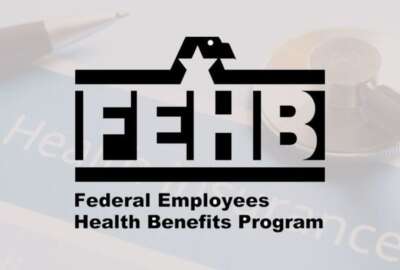Hubbard Radio Washington DC, LLC. All rights reserved. This website is not intended for users located within the European Economic Area.
Federal health premiums to rise 3.7 percent in 2014
Health premiums for federal employees are going up an average of 3.7 percent, according to the Office of Personnel Management. Postal Service employees, who sep...
Federal employees, on average, will see a 3.7 percent increase in their premiums under the Federal Employee Health Benefits Program (FEHBP) in fiscal 2014.
The Office of Personnel Management announced today the average increase for non-Postal Service employees is slightly more than this year, which was 3.4 percent.
On the good news side, OPM said dental and vision program premiums will increase by less than 1 percent, and vision alone will decrease by 1.3 percent.
OPM said it has kept premium increases relatively low in recent years.
“We do work with plans each year through the annual process and we emphasize cost-effective care and cost-effective benefits for enrollees. Certainly, we’ve focused in the last several years in terms of the drug costs and trying to hold those to a minimum,” said Jon Foley, OPM’s director of planning and policy analysis Tuesday during a press briefing with reporters in Washington. “We have targets the plans are held to in terms of generic rates and overall drug trends and special trends. We’ve focused on wellness and prevention consistently over the last three years. We’ve encouraged plans to have the most efficient plans possible.”
Postal Service employees will see, on average, a 3.8 percent increase.
Foley said the government’s share is 3.2 percent and the enrollee share is 5.6 percent.
“Postal employees have separate negotiating rights over government contributions and so that is handled separately,” he said.
Foley said about 25 percent of all FEHBP enrollees are USPS employees, retirees or dependents.
The rate increase comes as federal employees have not had a raise since 2010, and the White House is proposing only a 1 percent increase in 2014.
John O’Brien, OPM’s director of health care and insurance, said the agency makes the same case to insurance carriers to keep the rates as low as possible.
“If you look at these numbers, it’s about $400 more a year out of people’s pockets at a time when they’re not getting raises,” O’Brien said. “We emphasize that with the plans that any excess premium increases [is] money people not having to go to the movies or fix houses. We are very sensitive to it, and no one we can dance around it and that’s why we work hard to keep premiums down.”
In the early 2000s, premiums increased on average by 10 percent to 12 percent annually, so keeping premiums below a 4 percent increase for a third year in a row is a huge accomplishment, O’Brien said.
The average premiums in the private sector are expected to increase between 7 percent to 9 percent in 2014, Foley added.
On average, OPM said FEHBP enrollees for self-only coverage will increase $3.28 every pay period, and family coverage will cost $7.90 per pay period. Premiums for health maintenance organizations will increase an average of 6.5 percent, while fee-for-service plans will increase by 3.1 percent.
OPM said the overall share employees contribute to the $47 billion FEHBP is 4.4 percent while the government’s share is 3.3 percent.
O’Brien said most employees actually will end up seeing their premiums increase by less than the 3.7 percent average.
“That 3.7 percent increase is based on the assumption that everyone stays in the plan they are enrolled in today,” he said. “We’ve messed around with over the years how we present this number because what happens every time in Open Season, people make choices. Over our 30-odd years, however long we’ve been tracking this, the experience of that cross walk of people choosing is that some people choose cheaper plans. They don’t opt to for more expensive plans. So the actual average the federal employees will experience is anywhere from a half to a percent lower than the 3.7 percent.”
The premiums for the largest insurer, Blue Cross, Blue Shield of America (BCBSA), which has 62 percent of the 8.2 million employee, retiree and dependent enrollees, will increase by less than the average rate.
OPM said single insured employees under the basic option Blue Cross plan will see a $1.89 increase every two weeks, while families will see a $4.43 increase every pay period. For the standard option, single employees would see an increase of $1.91 and families would see their premiums go up $4.84 every pay period.
“For the past several years, we’ve been employing a lot of ways to try to control costs. We rely on each of the Blue Cross companies that provide products locally. With respect to provider relations and care-management activities, they have done an effective job,” said William Breskin, vice president, government programs for BCBSA, in an interview. “For example, one of the innovations is patient center medical homes. PCMAs are a new innovation in the industry. It’s a way by which health care is arrayed really to center more on the patient than in the past. The group of providers, doctors and specialists are arrayed around a patient. These people in the provider group are talking to each other and able to consult and work with patients. It lowers the overall costs and it’s good for the patient because they are not having to go to doctors as much.”
Breskin said BCBSA is starting to see the cost trends go down because of this type of innovation.
Blue Cross, Blue Shield said feds, for the first time, can sign up for dental insurance through the company.
Breskin said the company won a spot on the contract to provide dental services after missing out seven years ago.
In all, OPM announced there are no significant benefit changes for 2014, and a 10 percent increase in the number of plan choices to 256 total offerings.
Foley said among the new services insurers are offering are screening counseling on alcohol misuse, Hepatitis C screening, and tobacco usage intervention for children and adolescence.
Another thing OPM has asked insurers to do in their wellness programs is to ensure employees and retirees have access to a uniform set of wellness benefits across health plans.
“In our carrier letters, we emphasized all plans must offer health risk assessments in 2014,” Foley said. “This is a questionnaire that asks about health status and health behaviors. It’s meant to trigger preventive activity on their part or at the very least it gives health plans information about enrollee behaviors that they wouldn’t get otherwise through claims or any other information source. It’s a good tool for both the health plan and the enrollee.”
Open season for the federal health plan will run from Nov. 11 to Dec. 9. During that time, federal employees can make changes to their health, dental and vision insurance coverage.
The National Treasury Employees Union, which represents 150,000 employees across 31 agencies, said the premium hike amounted to a “financial hardship” for federal employees.
“Any increase in premiums places an undue burden on federal employees given the freeze on federal pay, unpaid furloughs and now the threat of a government shutdown,” NTEU President Colleen Kelley said in a statement.
The American Federation of Government Employees also derided the increase.
“Today’s announcement that FEHBP premiums [the employees’ share] will increase an average of 4.4 percent next year for enrollees is unacceptable. Federal employees have had their pay frozen for an unprecedented three consecutive years, and more than a million employees lost a week or more of their wages this year when they were furloughed under sequestration,” said J. David Cox, AFGE’s national president. “With everything else hanging over their heads, federal employees and retirees simply can’t afford this increase in their health insurance premiums. The average salary of our members is $50,000 a year, which means they’re taking home about $500 a week after taxes, retirement and health insurance. Hiking [employee contribution] premiums by another 4.4 percent next year means our members will be bringing home even less income.”
Copyright © 2024 Federal News Network. All rights reserved. This website is not intended for users located within the European Economic Area.
Jason Miller
Jason Miller is executive editor of Federal News Network and directs news coverage on the people, policy and programs of the federal government.
Follow @jmillerWFED





